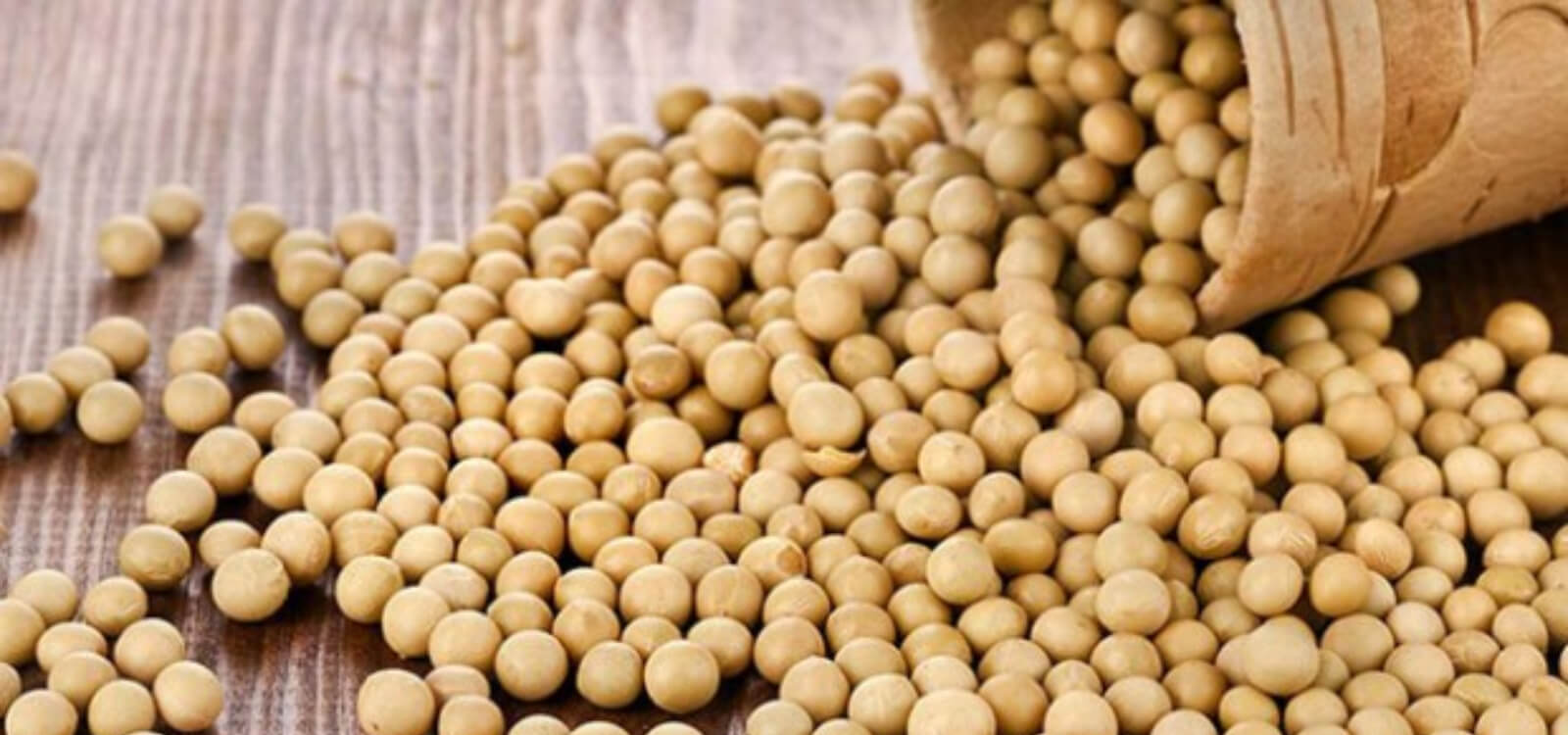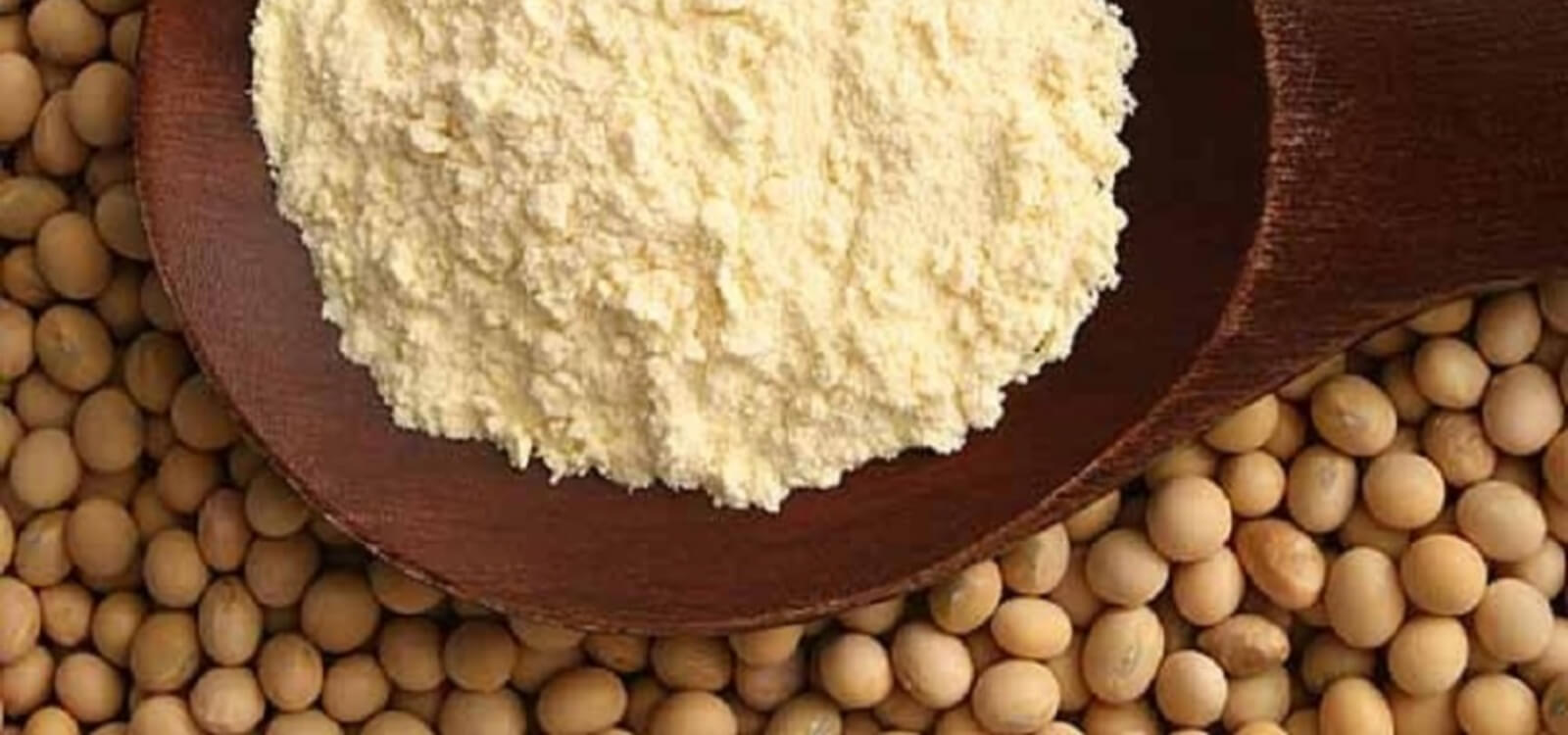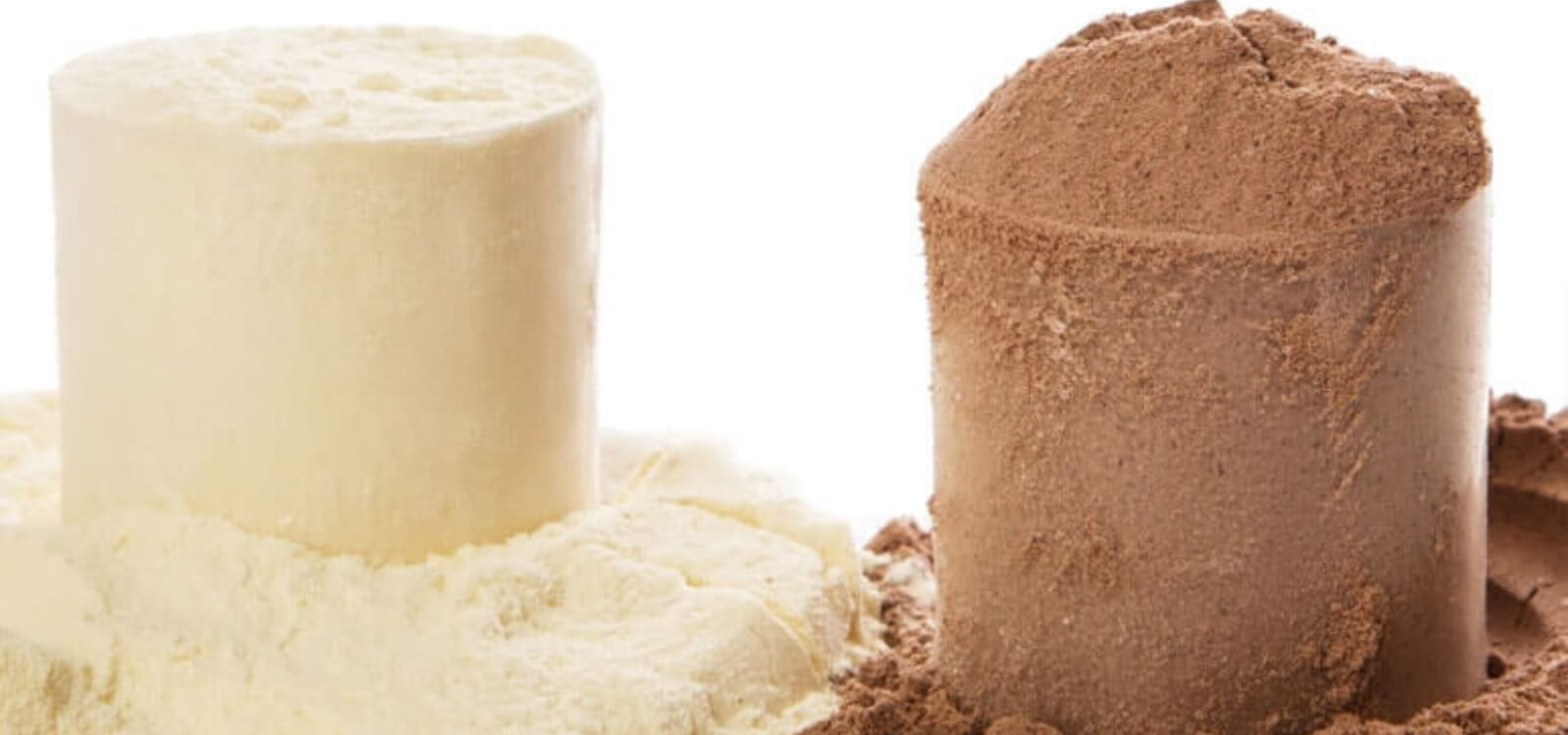Key Takeaways
- Soy protein, despite wide usage, is commonly claimed to increase estrogen in men. It’s also claimed to not be a good source of protein due to being poorly absorbed.
- While raw soy can indeed be toxic, cooked soy isn’t and the fears about it raising estrogen or impairing protein digestion are for the most part overblown. In fact, it holds beneficial properties not found in other proteins like anti-cancer potential.
- For most of us, consuming soy based products has no abnormal effects and may even be beneficial. However, if you have very high testosterone levels it may still be prudent to avoid soy.
Bodybuilders love protein powder.
Whether you’re a newbie or an expert, protein is your lifeblood. The blood of the covenant is stronger than the water of the womb but the whey of the gods is the strongest of all.
To turn your devotees into heretics, and have them win turning you into a proteinaceous pariah? Seriously soy, you had to have done something wrong.
Oh …
Estrogen.
Hey, soy, why are you twiddling your thumbs and looking away to the side when you said that … what do you mean “well, technically.” Do you grant the mortals gains or not?
Shifty as always, soy. This is why there’s so much confusion around you.
Ah, soy protein. The fallen angel of protein powders. The dark one who removes gains rather than granting them. There’s a bemusing amount of memes and other inside jokes about soy protein among athletic demographics and, honestly, I love them.
Unfortunately, sometimes the jokes get mixed up with some citations and people get confused. When a bunch of people joke about soy causing hair to fall off your chest (rather than “growing hair” as a masculine reference) some people will, invariably, think that soy legit causes hair loss.
Even the term “soy boy”, which arose recently in some circles on the Internet as a joking term to describe effeminate acting men (among … other things) is met with people asking if soy legitimately feminizes men—no, to my knowledge eating some tofu does not actually cause “soy face” as a side effect.
But, regardless, there are still concerns about soy and it’s not made easy by the impressive breadth of data that commonly contradicts itself (due to our own misunderstanding of how components of soy work) so I’ll do my best to break it down.
But let’s start with a conclusion. Soy seems to be totally fine except for a few people. To know why this is, we need to first look at what soy is. Not a fallen angel of muscularity, but a bean.
What Is Soy Protein?

Soy protein refers to the amino acid portion, called Glycine max of soybeans, the type of beans best known for comprising tofu and being a popular vegan source of protein.
This protein source reached notoriety mostly due to how it’s a complete source of dietary protein, meaning that it gives all the essential amino acids in adequate levels for nutrition, despite being a plant source of protein—usually only animal sources are complete.
It’s status as a complete protein, versatility as a food product, and good taste let soy become a dietary staple among many people who did not eat much meat or other animal products.
However, the fact that it has a complete amino acid profile isn’t the only thing soy has going for it.
Soybeans contain numerous other compounds in them, most notoriously the soy isoflavones that are linked to everything estrogen, and trypsin inhibitors that are weird anti-cancer yet anti-protein compounds.
Soybeans, by virtue of being a nutrition bean, also tend to have a nice blend of vitamins and minerals by default but we won’t focus on that too much in the article. Not only is it not plentiful enough to replace a multivitamin but their inclusion is indisputably good.
Let’s focus on the controversial, the molecules that make people think that soy protein is bad. Spoiler alert: it’s not as bad as you think it is.
Why Do People Say Soy Protein Is Unhealthy?
Soy is attacked mostly due to a combination of hype going in the wrong direction and practical misinterpretations of data on the topic.
Much like how a drop of water means nothing to the ocean, some things can be technically bad but are just so small in magnitude that it’s not worth worrying about.
Also, not gonna lie, hating on soy is something of a meme. Poor tofu didn’t deserve this, he tried his best to make a delicious steak—it wasn’t his fault he was born a bean.
Or she, I guess, most of the hate is directed towards her phytoestrogens after all.
Soy Isoflavones and Estrogen
The phytoestrogens (phtyo- meaning “plant”) refer primarily to two specific estrogen-like compounds found primarily in soy but also some other plants—genistein and daidzein.
You may also see the terms genistin and daidzin (where the “e” is dropped) and equol floating around when talking about these soy isoflavones.
The former two are the glycosides of the phytoestrogen, which is a term used to refer to how they’re bound to a sugar as a sort of protective delivery package. Equol is another phytoestrogen that’s a breakdown product of genistein that’s perhaps the most estrogenic of all three.
These molecules are known as phytoestrogens because, simply put, they act on the estrogen receptor in an attempt to activate it. If successful, they can then impart estrogen-like effects onto the affected cell.
This alone is enough to scare some people away from soy, in some perceived slight that touching tofu will make a man’s balls retract into their body, grow a lot of adipose tissue, then plop back out of their bodies upon their chests—not like estrogen is neuroprotective, supports muscles via satellite cells, and delays brain aging in both sexes or anything …
But say that they’re selective estrogen receptor modulators (SERMs) and all of a sudden people will pay out of the nose to use them with a testosterone cycle.
Context can be a powerful thing, and it all starts with understanding potency.
How Much Can Soy Affect Estrogen Levels?

First, let’s talk potency.
As I wrote in my article on supplements you should never take, in reference to the herb Pueraria mirifica (White Kwao Krua,) truly potent estrogens that act like estrogenic birth control.
If you give them to female primates they should be able to block estrus—which is what Pueraria mirifica does, and why it’s actually worthy of some fear among men.
Soy? No primate evidence but in rats it seems that elevated estrogen levels self-regulate genistein and limit it’s absorption, high estrogen reduces the potential estrogen-like effects of genistein in the body.
If you genetically modify rats to be unable to eliminate genistein (by drastically impairing glucuronidation, the process by which genistein is removed) and feed them a ton of it then, sure, you can force estrus.
But the difference here is that the former example of Kwao Krua is reliably potent, it will happen when you put it in your mouth, while the latter hinges of a genetic abnormality or perhaps an adverse drug-drug interaction. Perhaps there’s credence to not having a black pepper extract IV hooked up when you have your tofu (the piperine in black pepper extract inhibits glucuronidation).
But enough about animal studies on estrus. Let’s move to more relevant human data on soy. What do we have right now investigating the estrogenic effects of soy?
Bunch of studies in post-menopausal women where soy isoflavones are rightfully linked to estrogen-like improvements, but post-menopausal is synonymous with “lacking estrogen.” Younger women don’t seem to see much alteration in estrogen kinetics.
When the topic shifts to men, and androgens like testosterone are included into the mix, things get a bit more interesting.
It seems that soy intake in men is actually negatively associated with estrogen—more soy, less estrogen. While that study noted a barely significant reduction in testosterone as well, a later study failed to note any effect on testosterone over 12 weeks in young men.
That study, and this one, also note absolutely no differences for strength and muscle mass when paired with resistance training. For all intents and purposes, soy seems to be pretty neutral when it comes to hormones in otherwise healthy subjects. It only seems to show potency in situations of estrogen deficiency.
This isn’t to say there isn’t an effect on testosterone at all, it’s just that it’s a bit more … sketchy?
Soy Isoflavones as SARMs/SERMs
It may be possible that the isoflavones have a moderating role on androgen and estrogen activity.
The aforementioned studies showing no effects on testosterone are, at times, met with studies that do show a decrease of 19+/-22%. That particular study was responded to by other researchers where it was mentioned that a single subject may have skewed the results—seeing a 40% reduction over four weeks and a further 30% over the next two weeks.
Everybody else in the study was fine, that guy had a really bad time.
This can make theoretical sense when we think about how the isoflavones interact with androgen and estrogen receptors, and discussing SARMs or SERMs.
Selective androgen receptor modulators (SARMs) or selective estrogen receptor modulators (SERMs) are molecules that activate and also block receptors in the body. In a way, it’s like having the second-best person do a job but, since they are on the job, the best person cannot act.
By virtue of activating the receptors they can increase signaling, leading to hormone-like effects, but by virtue of being weaker than hormones they can indirectly reduce hormone-like effects by preventing the hormones from connecting to the receptor and acting on it.
So the job is getting done. Not the best, mind you, but getting the job done.
Not only do SARMs have a similar profile when given to humans (helping those with low androgen, not too much effect in those with good androgens, and impairing those with very high androgens) but in rats genistein has been shown to both have antiandrogenic effects while, in castrated rats … it activated the androgen receptor?
Huh, who knew that you could technically be right in calling soy an androgen?
Keep in mind that they were castrated though, if that result is to be practical in humans it would be in the phenomena that we call “andropause” (where androgens decline during aging) or testicular trauma.
The soy isoflavones seem to have a “leveling the hills and filling the valleys” effect, providing a normalizing effect on abnormal hormone levels. This is a good thing if you don’t want your hormones to be abnormal but probably not the best thing for steroid users.
Soy Protein and Protein Quality

Soy protein has also been attacked not for including the isoflavones themself, but for simply being a “bad” protein. This claim is also fairly overblown as we will explore.
Soy Protein and Trypsin Inhibitors
The term trypsin inhibitor tends to refer to a group of moderately sized peptides (groups of amino acids in particular sequences) called Bowman-Birk protease inhibitors (BBIs)—peptides that can inhibit various enzymes that digest or break down proteins (proteases.)
For soy, they possess peptides that can inhibit the trypsin and chymotrypsin enzymes. These two enzymes are secreted from the pancreas into the intestine to help us break down dietary protein into amino acids so we can actually absorb them.
If they are successfully inhibited then we absorb less protein, and this would inherently reduce the protein quality of any protein we eat.
If you’re wondering “why in the hell would a protein source have enzymes that prevent protein digestion in them?” remember that plants are technically living things that don’t want to be eaten and sometimes form defenses.
Broccoli developed a bitter taste in order to sway predators from eating it, resveratrol and caffeine are known as phytoalexins that give insects seizures like natural pesticides, and so on—humans are just oddly stubborn and will eat anything so this stuff tends to not work on us (pufferfish can outright kill us and we still eat it, we’re pretty stupid at times.)
So, what about these BBIs?
Well, in their purely unprocessed form (in raw soybeans) they can not only impair protein digestion but may be capable of causing oxidative stress in digestive organs—studies on soy usage in animal feed tend to note pancreatic damage in this manner since they are encouraged to over-secrete a hormone called cholecystokinin (CCK.)
Now, raw soybean is known to cause hypertrophy of digestive organs including the pancreas (unlike your muscles, hypertrophy of organs is not a good thing) and recently there has been a shift in thought that the BBIs are not the responsible agent (even though past evidence showed it.) It’s thought to be something else, but we at least know it’s “raw soy.”
It is this reason that when people call raw soybeans toxic … they’re technically correct.
Now, this applies to raw soybean. The BBIs are resilient, and 10 minutes of boiling cannot break them down, but eventually they can be destroyed and we have confirmed that whatever causes “raw soy” to be toxic is not an issue after proper processing. It’s why we still use soy in animal feed these days, we made it not harm the animals anymore.
These processing techniques are what we also use in dietary supplements and our own food supply, so unless you devour edamame daily it’s not much of an issue.
Finally, more a side note than anything, recent research on BBIs actually paints them as anti-cancer compounds. Not just colon cancer, but since they are among the peptides that can be absorbed into the blood intact and are urinated out they can reach inside the body rather than stay in the intestines. They have even had phase II clinical trials showing efficacy!
So where does that leave us?
BBIs do seem to impair protein digestibility, but while it may not be prudent to have them by the truckloads we can’t say that they’re responsible for the toxicity of raw soy. BBIs, also, are not soy exclusive—even fenugreek, rice bran, and barley have them.
But, ultimately, don’t over consume raw soy. Soak the beans first, preferably overnight.
Protein Quality
With the existence of Bowman-Birk inhibitors known, how does this affect overall protein quality of soy?
Practically? Not too much. I mean, there’s a reason that soy protein was the first reference protein in existence. The protein to compare all other proteins against since, at the time, it was actually the best known protein powder.
Note that it wasn’t the best known overall protein back then. That goes to the humble egg which, when the first protein ranking score was created via “Biological Value” (BV) egg was given the reference value of 100—soybean scored 96.
Both were later outright defeated by whey protein, breaking the scale with values above 100 (although they vary, usually in the 100 to 120-range) which we now know is the most digestible and easily absorbed protein source.
So is soy the best protein? Clearly not, even if we go beyond BV as a measurement. However, being a runner up isn’t that bad. The nutrition of soy protein is reliable enough that it’s actually used in many scientific studies as the control or placebo group.
In researching the benefits of whey protein you can’t just give whey protein to one group and nothing to the other group, you need to give them some source of protein to balance things out, and soy protein has long been used as the reference protein.
Soy protein is clearly not the best protein source out there, but it’s a very respectable protein source regardless. It’s reliable and nutritious enough to be used as a reference protein to compare other proteins against in scientific studies.
How Does Soy Compare to Other Protein Sources?

Even if soy ends up being great, there are many great proteins out there and I don’t see why people would opt to buy multiple types when they can just buy one—the best protein for them.
To see if soy is “your” protein, we need to compare it against the others.
Soy Protein vs. Dairy Protein
The dairy proteins refer to milk protein and, more specifically, the subtypes of whey and casein proteins.
Whey protein is known as the king of proteins since it has an incredible digestibility, beating out egg and soy at their own game on the BV measure. However, it also has a few health benefits pertaining to blood pressure (due to its own peptides) and high levels of specific amino acids that bodybuilders want like the BCAAs and glutamine.
Casein protein is the slower digesting parallel to the faster digesting whey protein. Significantly higher in calcium (at times providing 60% of the RDA in a single scoop) and with gel-forming capacities to make pudding from it, casein is a pretty solid protein choice both for health and practical reasons.
Cause even if the pudding simply tastes “decent” rather than great and has no springiness to it, if it has the same nutritional composition as an unseasoned chicken breast I’ll happily eat it rather than another damn chicken breast.
When it comes to health, the dairy protein sources and soy are … comparable enough that micromanaging their differences is missing the forest for the trees. Casein might be a better choice for calcium intake, whey for blood pressure, and soy for postmenopausal women, but the difference in potency can be easily overtaken by just having another serving of veggies.
For building muscle I will likely give the crown to the dairy proteins but, honestly, it’s a closer fight than you would think. The reason for my choice is that there are no studies showing soy superior to whey but it’s not like whey wins every time—sometimes there’s no difference.
For weightlifting and building muscle, opt for dairy proteins. For health, opt for the protein that provides the “side-benefits” that you like the most. Overall, however, the vast majority of benefits are mutual and are simply due to increasing protein intake overall.
Soy Protein vs. Rice and Pea Proteins
Rice and pea blend proteins are popular among vegans as they’re also a plant-based source of protein that, in their combination, form a complete amino acid profile.
They’re also quite tasty, have a good mouthfeel, and are generally a match made in heaven for manufacturing and taste reasons. Perhaps as good as non-animal sources of protein can get in their powder form.
However, nutritionally speaking they do not exceed soy protein. Both are quite comparable in regards to their protein quality. The only major difference is that, while soy is a protein that you may have to account for the other factors within it, rice and pea is fairly inert and doesn’t contain many other hidden compounds (that we known of).
It’s for this reason why we use the latter in Thrive, simply because we can avoid the whole “is soy good or bad” debate and focus more on taste.
Ultimately, comparing soy protein versus the rice/pea blend is a close enough battle that you may be missing the forest for the trees by trying to force one of them to be “better” than the other. Both get the job done, it’s just whether you want the isoflavones or not.
The Bottom Line on Soy Protein
At the end of the day, soy is a viable protein source that’s of interest to older individuals who’ve gone through menopause and want a little boost in the right direction without opting for stronger hormonal agents.
It can easily be consumed in youth but it seems to lose a lot of its potency on the hormonal profile if there are no hormonal abnormalities in the first place. However, if you don’t want the hormonal effects then soy is basically comparable to rice/pea blend in the sense that they just become tasty sources of protein.
The protein inhibitor issue is also quite overblown, and while eating copious amounts of raw soy is still a bad idea some properly processed or cooked soy here or there should have no abnormal effects.
Ultimately, our girl soy has gotten unnecessary amounts of hate due to being the first phytoestrogen discovered (and by virtue of that, the most studied) and has been typecast as “estrogenic”—sort of like how vitamin C is typecast as “the antioxidant” simply due to how many studies it has.
For most of you, consuming or avoiding soy is not a major deal.
For those of you with abnormally high testosterone, I can understand why you avoid soy if you don’t want to be the “case study” that might experience a large drop in your androgens.
For those of you who want to learn even more about the best kinds of protein powder for building muscle, then you want to check out this article:










